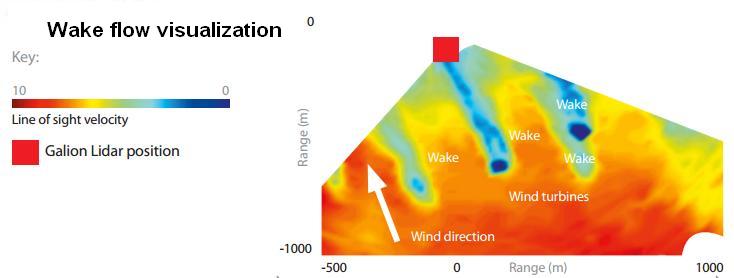Two universities have recently purchased long range Galion Lidar from renewable energy consultancy, SgurrEnergy. The Centre for Advanced Condition Monitoring (CACM) at the University of Strathclyde in Scotland and the Atmospheric Science Program of Indiana University (IU) in the U.S. will use the Galion for wind energy research projects.
Galion Lidar is a powerful wind measurement tool being used by a growing number of research institutions in wind-energy-related projects and is becoming of increasing interest to the wind energy research community.
Wind analysts at Strathclyde’s CACM will use its Galion Lidar to accurately quantify the impact of specific wind characteristics, such as turbulence and gust structure, on key turbine components and turbine life.

Multiple beams are used to build a detailed picture of wind flow over an entire site. It is particularly useful in post appraisals. Using Galion software, users can identify and measure wakes to improve model validation. Vertical cross section and sector-arc scans allow measuring the wind anywhere within range and acquiring detailed flow maps.
Dr Francis Quail, director of the CACM, said, “Using Galion Lidar offers exciting potential to assess how inflow conditions relate to the development of next generation condition monitoring solutions and ultimately total asset management strategies. It is envisaged that such developments will lead to improved design standards, increased operational performance and reduced levelized costs of energy for the wind industry sector.”
IU will deploy its Galion at the National Wind Technology Center in Boulder, Colorado. The Galion will be used to implement a variety of scan geometries to explore key questions of interest to the wind industry. These include confirming the accuracy of “remote mast” configurations, which measure wind speeds in one location using a Galion installed in another location 1km away. This involves using “arc scan” methods, pioneered by the Galion, which has overcome the limitation of other devices which are restricted to measuring in the region immediately above them.
Other tests will exploit the Galion’s unique versatility to acquire vertical and horizontal cross sections of the wind, providing detailed visualizations of wind shear, veer and wind turbine wake phenomena.
Rebecca Barthelmie, Professor of Atmospheric Science and Sustainability at UI, said, “The Galion combines the autonomy of wind profiling Lidars with the extended capabilities of scanning Lidars to provide an almost limitless range of potential study designs and hence much more flexibility in field research.”
The study of such a wide variety of wind flow parameters by these academic research campaigns is expected to illustrate the ability of SgurrEnergy’s Galion Lidar to go beyond the concepts and capabilities of conventional mast technologies to provide comprehensive and detailed datasets which will provide answers to key questions arising at every stage of wind energy projects.
Galion Lidar
www.spurrenergy.com
Filed Under: News




